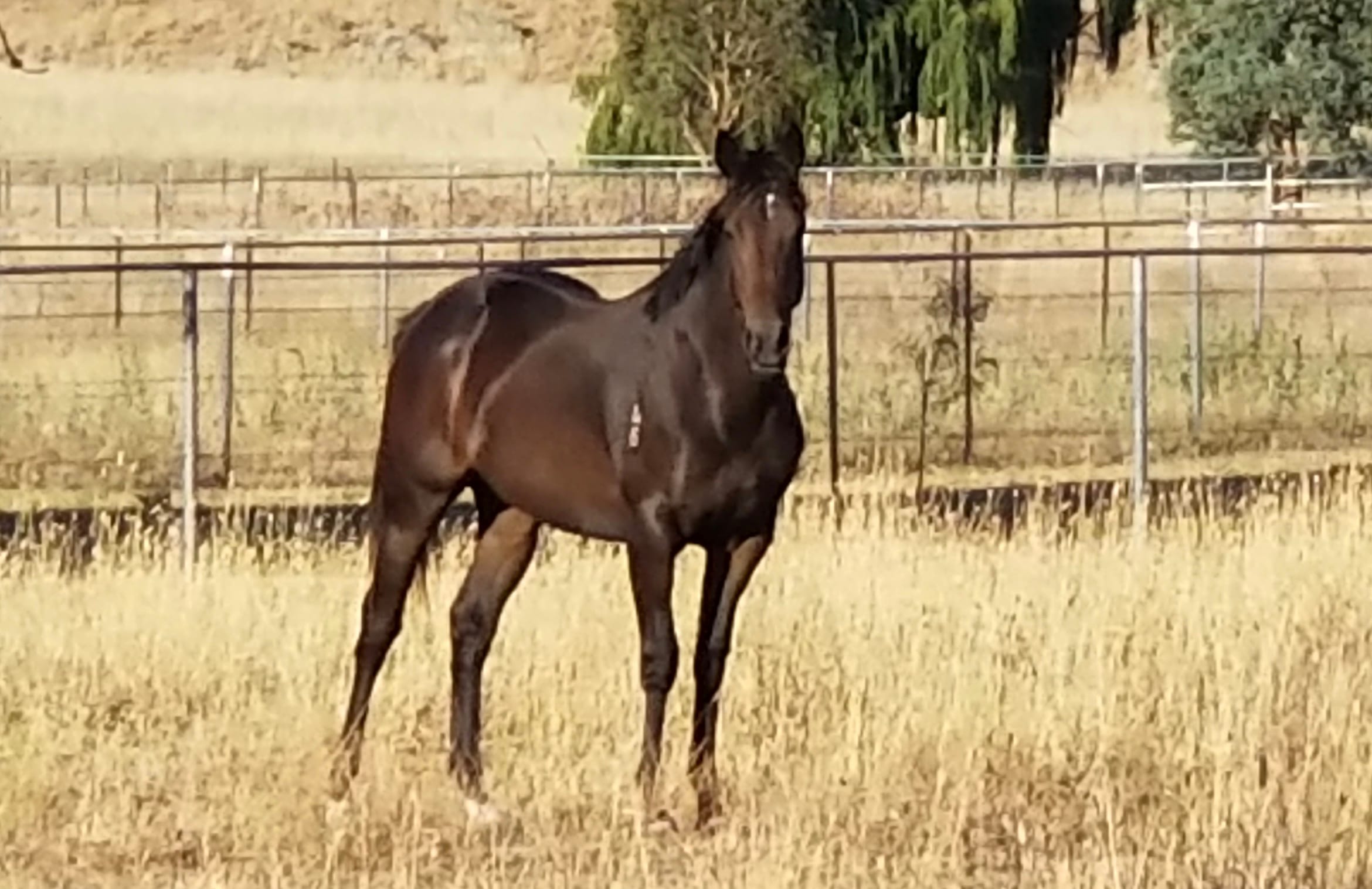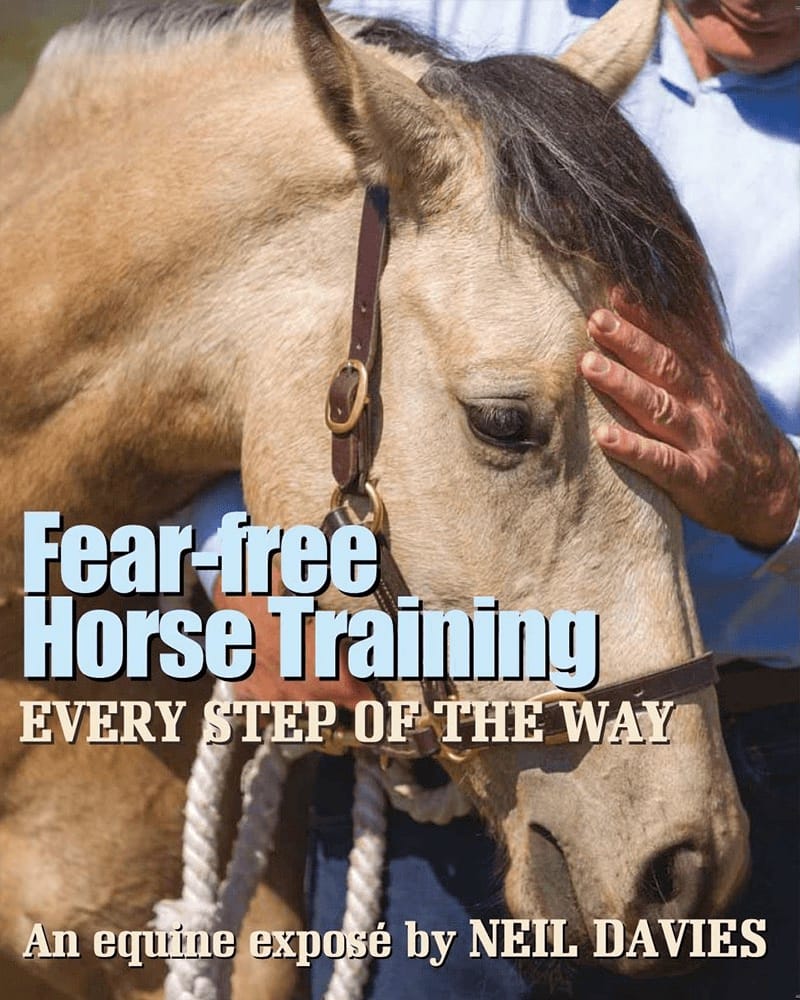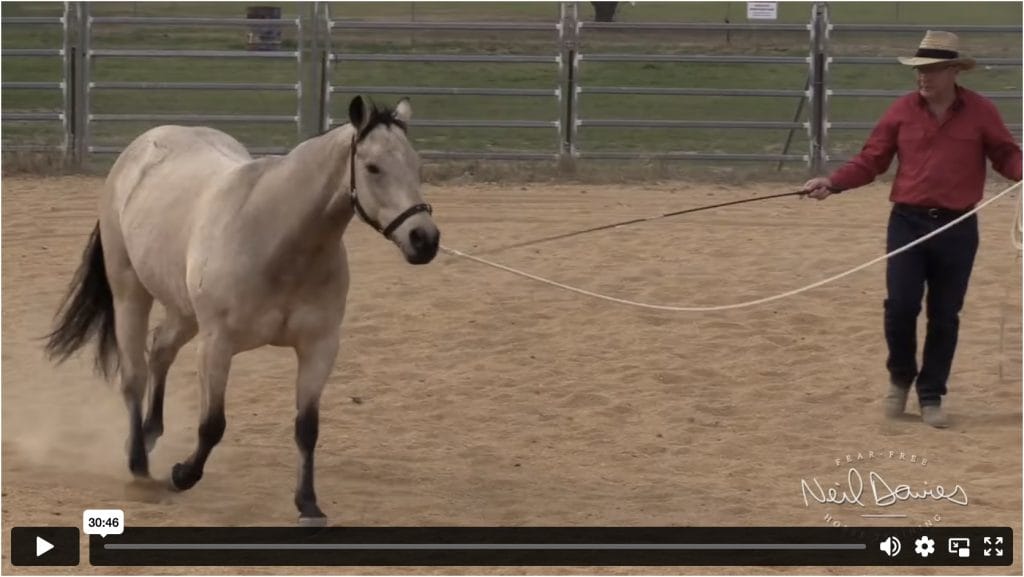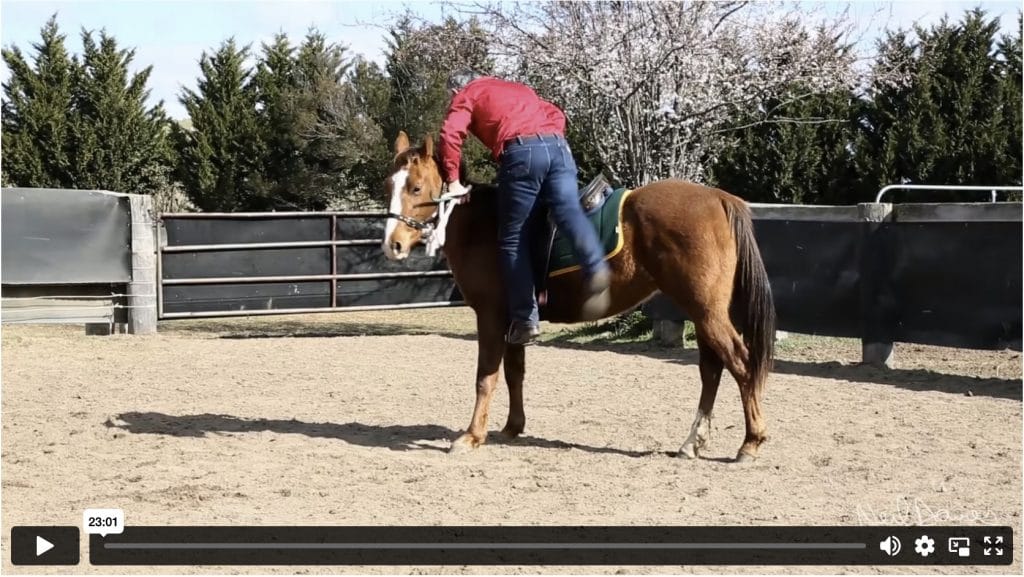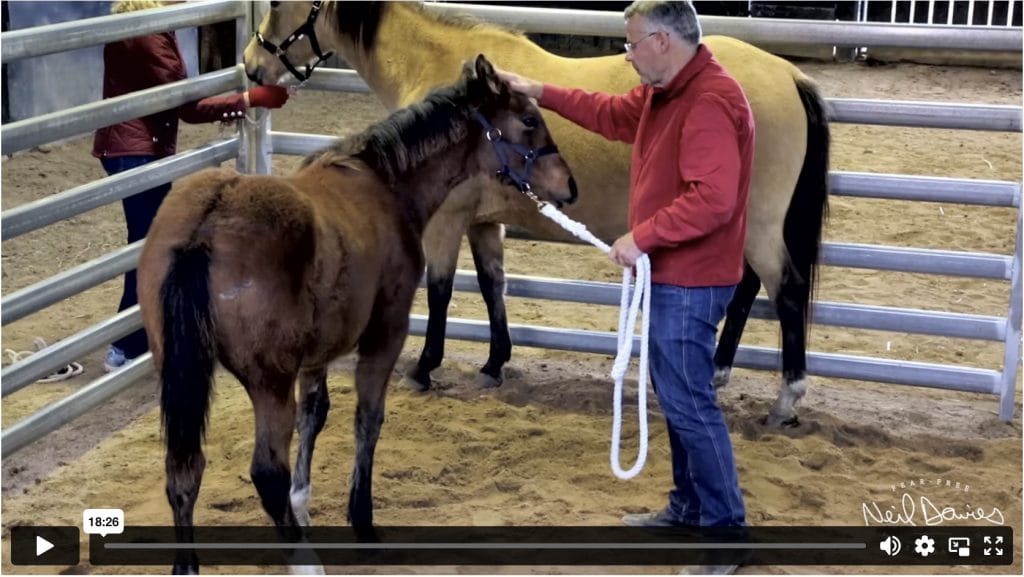Q: The horse I lease has a serious aversion to horses coming toward him when riding in the arena.
He’s an off-track Thoroughbred (OTTB) and, his current owner doesn’t know what sort of incident he might have had in his past that made him this way.
It doesn’t matter if we’re walking or trotting, he tends to stop and spin away from the approaching horse—sometimes violently.
Last year he improved to the point where he would only tense up when a horse approached while schooling at home.
We went to a horse show, however, and that all went out the window.
What can I do to help him get over his fear?
Otherwise he’s a well-behaved horse and successful in the show ring.
Anna, via email
Hi Anna,
Your horse is a good example of why it’s so important not to frighten horses with bad experiences at any point.
One frightening experience can be enough to create problems for life.
Your horse is typical of a horse that’s had a frightening experience at some point.
Even though you may overcome his behaviour at home, under pressure or when things go wrong,
the frightening experience will come to the forefront of his mind and the undesirable behaviour will re-surface.
When a horse has had bad experiences like this, you can’t make him forget.
You can’t erase any horse’s memory.
The only way to overcome any problem is to go back to basics and teach your horse to relax, move forward and give correctly.
After all, if your horse was relaxed, moving forward and giving he won’t be stopping and spinning away.
Instead of working on your ‘problem’, you must work on teaching your horse to move forward and give.
Work in an arena without any other horses around.
Instead of confronting your horse with things that worry him, work on things you know you can do.
I’ve demonstrated this in my Fear-free Fundamentals Online Clinic.
You need to improve your horse in the walk, trot and canter.
You need to be able to control your horse in every situation.
Your horse must be thinking about you and what you want.
Your horse must move exactly where you want, at the speed you want, in the gait you want.
This may sound easy but it is in fact, very difficult.
For a horse to spin away, he first has to slow down and stop.
The first step that your horse slows is the time to correct him.
You must drive your horse forward so that he maintains your speed. It’s far too late to correct your horse after he’s stopped or spun away.
Every horse can be improved.
Every horse can be taught to relax, move forward and give.
However, no horse can be made to forget frightening experiences.
That’s why no matter what you do, there may be times when your horse reverts to his undesirable behaviour.

